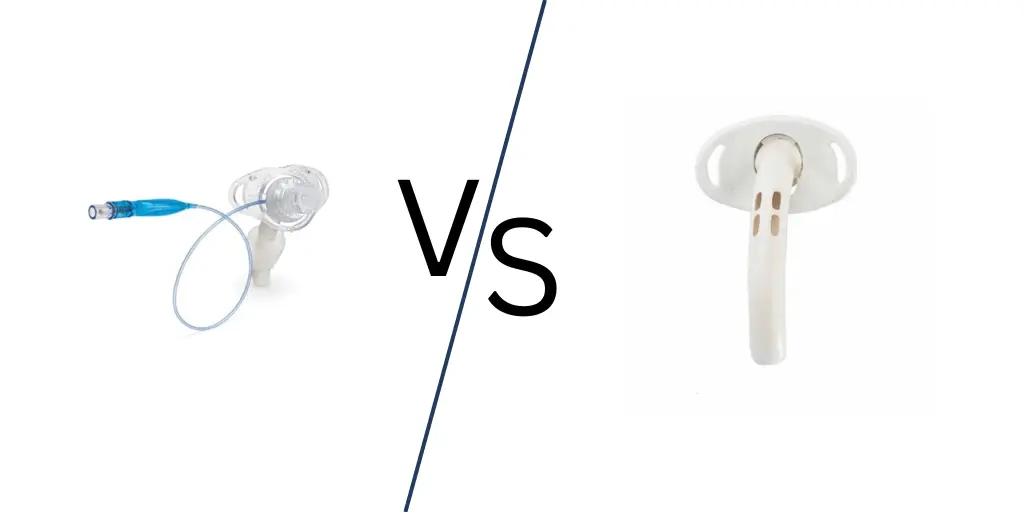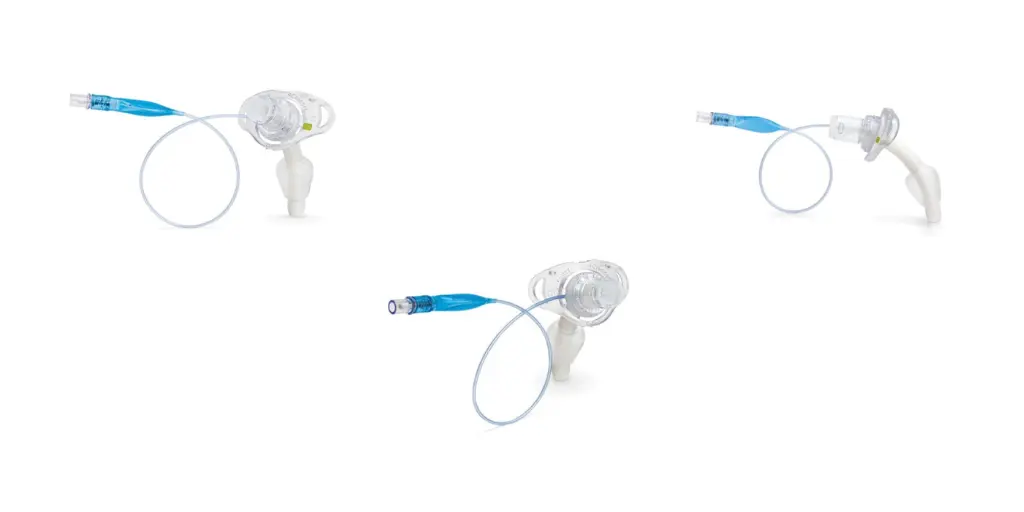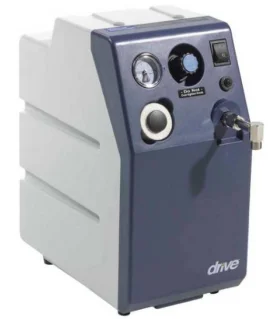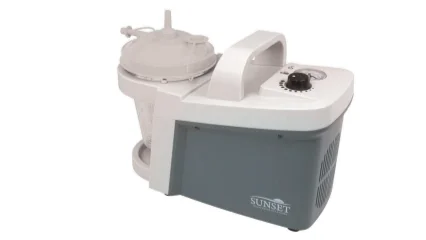Cuffed vs. Uncuffed: How to Choose the Right Tracheostomy Tube for Your Needs
A tracheostomy tube (or “trach”) is a vital piece of medical equipment, and the decision between a cuffed and an uncuffed tube is one of the most important made by a patient’s care team. The choice is based on the patient’s immediate respiratory needs, their risk of aspiration, and their long-term communication goals.
Understanding the difference comes down to one key feature: the small, inflatable balloon at the tip of the tube. Cuffed vs Uncuffed Tracheostomy Tube

Key Takeaways
Cuffed vs Uncuffed Tracheostomy Tube
- A Cuffed Tracheostomy Tube has an inflatable balloon that seals the airway, which is necessary for mechanical ventilation and high-risk aspiration patients.
- An Uncuffed Tracheostomy Tube allows air to pass around the tube and over the vocal cords, which is preferred for speaking, swallowing assessment, and long-term, stable care.
- The transition from a cuffed to an uncuffed tube is a major step in the weaning process, signaling improved independence and respiratory status.
The Cuffed Tracheostomy Tube: The Secure Seal

The cuffed tube features a small, inflatable balloon (the cuff) at the bottom end of the tube. When inflated, this cuff creates a secure, airtight seal against the walls of the trachea.
Primary Uses for a Cuffed Tube:
- Mechanical Ventilation: The seal ensures that air delivered by the ventilator goes directly into the lungs and cannot escape back up through the mouth or nose.
- Aspiration Prevention: The inflated cuff acts as a physical barrier, helping to prevent foreign materials (like food, liquids, or oral secretions) from entering the lower airway and lungs.
- Initial Care: Cuffed tubes are typically used immediately following the tracheostomy procedure or when a patient is in critical care.
Note: Because the cuff completely seals the airway, air cannot move over the vocal cords. Therefore, patients with an inflated cuffed tube cannot speak until the cuff is deflated and a speaking valve is in place (a process carefully managed by clinical staff).
The Uncuffed Tracheostomy Tube: Communication and Enhanced Comfort

The uncuffed, or cuffless, tube does not have the inflatable balloon. This allows a certain amount of airflow to pass around the tube and travel up to the patient’s larynx (vocal cords).
Primary Uses for an Uncuffed Tube:
- Speech and Communication: Air passing over the vocal cords allows the patient to use a speaking valve and, in some cases, speak without one.
- Long-Term Care: Uncuffed tubes are generally used for patients who are stable, breathing independently, and have a low risk of aspiration.
- Airway Weaning: It promotes a more natural airflow and prepares the patient for eventual decannulation (removal of the tube).
- Pediatric Care: Uncuffed tubes are often favored in pediatric patients due to the unique anatomy of children’s airways, which reduces the risk of tracheal injury.
The Role of Routine Supplies in Tracheostomy Management
Regardless of whether a cuffed or uncuffed tube is used, routine care and the use of the right tracheostomy supplies are non-negotiable for preventing infection and maintaining a clear airway
Essential Supplies and Coverage:
- Suctioning Equipment: Maintaining a clear airway requires the regular removal of secretions. Having a reliable tracheostomy suction machine and corresponding suction catheters is essential.
- Air Humidification: Since the trach bypasses the nose and mouth, the air entering the lungs can be dry. A trach humidifier machine or Heat and Moisture Exchanger (HME) is crucial for preventing thick secretions and irritation.
- Tube Maintenance: Regular replacement and proper technique for cleaning a tracheostomy are vital. This includes using inner cannulas, cleaning brushes, and sterile water.
- Insurance Coverage: Many of these necessary items—including tubes, inner cannulas, care kits, and the tracheostomy suction machine—are recognized as medically necessary. To find out what tracheostomy supplies covered by Medicare and private insurance plans, contact UniversalMed Supply or search for “tracheostomy supplies near me” to confirm local coverage and access
The transition from a cuffed to an uncuffed tube marks a significant milestone in a patient’s recovery journey, focusing on quality of life, communication, and preparing for life without the tube.
Disclaimer: This information is for educational purposes only and should not replace professional medical advice. Always talk to your doctor or healthcare provider for diagnosis and treatment of any medical condition.
FAQs Tracheostomy Tube & Supply
Q1: What is the main purpose of the cuff on a tracheostomy tube?
Answer: The main purpose of the cuff is to create an airtight seal against the tracheal walls. This seal is crucial for two reasons:
To ensure all air from a mechanical ventilator goes directly into the lungs.
To help prevent materials (like food or saliva) from being accidentally aspirated into the lungs.
Q2: Can a patient speak with a cuffed tracheostomy tube?
Answer: Generally, no. When the cuff is inflated, it completely seals the airway, preventing air from moving up and over the vocal cords. Speaking is only possible once the cuff is deflated (if medically safe) and a specialized accessory, like a speaking valve, is in place.
Q3: Which type of tube is better for long-term use and communication?
Answer: The uncuffed tracheostomy tube is generally preferred for long-term, stable care. Since it allows air to pass over the vocal cords, it significantly enhances a patient’s ability to communicate, promoting a better quality of life and making airway weaning easier.
Q4: What tracheostomy supplies covered by Medicare?
Answer: Medicare (Part B) typically covers necessary tracheostomy supplies as Durable Medical Equipment (DME). This includes the trach tubes themselves, inner cannulas, cleaning kits, and essential equipment like a tracheostomy suction machine and a trach humidifier machine. Coverage depends on medical necessity and your specific plan.
Q5: Why is a trach humidifier machine necessary?
Answer: The tracheostomy bypasses the nose and mouth, which normally warm and moisten the air. A trach humidifier machine or HME (Heat and Moisture Exchanger) adds moisture to the air entering the lungs, preventing secretions from becoming thick, crusting, and difficult to remove, which is key to effective cleaning a tracheostomy.
Q5: Where can I find tracheostomy supplies near me?
Answer: To ensure coverage and reliable supply, you should contact a local medical supplier that specializes in respiratory DME, such as UniversalMed Supply. They can confirm product availability and assist with the necessary insurance paperwork. becoming thick, crusting, and difficult to remove, which is key to effective cleaning a tracheostomy.



